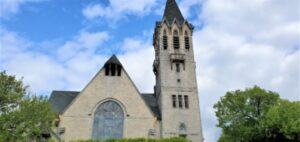
A church that has towered above the Village of Ossining for nearly 140 years may be headed for a second act as a cultural and performing arts space.
Ossining Methodist Church on Emwilton Place just steps away from Ossining High School was acquired by the school district in 2022 for $2.4 million.
The 1,300-square-foot church building dates from 1885 and was designed by architect Ebenezer L. Roberts in High Victorian Gothic style. It contained some 40 stained glass windows, including an original signed by renowned glassmaker Louis Comfort Tiffany that is now owned by a Texas museum.
The building is two-and-a-half stories high, with a four-story tower in the southwestern corner that contains three small gables and a balcony, according to documents on the Village of Ossining’s website.
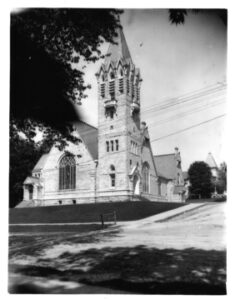
It was built from white marble from the Snowflake quarry in Thornwood — where the ShopRite stands today — that was carted to the site by a team of oxen.
The story behind its construction contains some twists. Wealthy businessman Henry J. Baker, who built the Squire House across Highland Avenue, helped raise $30,000 toward the project.
Baker died in 1878, a year after construction commenced, according to village records. The building sat unfinished for eight years due to lack of funds and higher than expected construction costs. Baker’s body initially was buried underneath the main vestibule at the base of the tower in 1878, but was removed in 1893 on his family’s wishes.
The church was built to house the Sing Sing Methodist Congregation, which had outgrown its space on Spring Street, which was originally known as the Sing Sing Union Chapel. This was at a time when the village was named Sing Sing until changing its name in 1901 to differentiate itself from the prison.
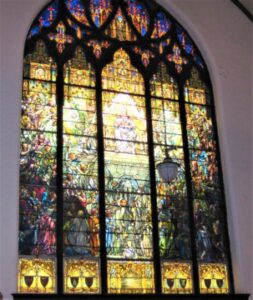
The Tiffany window, titled Te Deum: Christ Enthroned, apparently was sold by the United Methodist Church’s New York Conference. It is now on display at the Gelman Stained Glass Museum in San Juan, Texas.
The window is composed of 41 panels and was proclaimed as one of the most “famous windows of this country” when it was installed in 1899 in memory of longtime Ossining church member Townsend Young, according to the museum’s website.
Peter Cassidy, an Ossining Methodist trustee and historian, said an offer of about $1 million was made to the congregation for the window before the church was closed by the regional conference. The offer, according to Cassidy, was going to include a reproduction of the window plus money toward refurbishing other windows.
Cassidy said trustees went along with the conference’s decision to close their church although he said the small congregation had enough money to remain open.
“They really didn’t give us much of a choice,” said Cassidy, who was saddened by the decision. A deconsecrating ceremony took place in August of 2019.
Cassidy, whose parents attended the church before him, said the main sanctuary with its 65-foot ceiling sat 750 in pews made of California redwood that were constructed onsite.
The building was later rented out to Iglesia Mana De Vida Eterna.
A May 9 presentation on the school district’s master plan refers to plans for the building as “Church (Dance/Theater) STEAM.”
Outgoing Superintendent Ray Sanchez said in late May that the district was “looking at it for the purposes of the arts, cultural arts, basically.”
Sanchez said plans had not been finalized and would be presented to the community before moving forward. The site’s historic significance and its past use as a church required extra layers of planning and approvals.
He said the district would like to keep the church’s immense organ, but religious items would need to be removed because of the building’s use as a public school. Those items, including stained glass windows, could be either preserved or sold.
The three-quarter-acre property was cleared of asbestos to allow access to the school district’s architects and construction manager.
An inscription on a historical marker outside the church, which was erected for the 1983 Westchester County Tricentennial, reads: Built of local snowflake marble. Windows designed by Tiffany and J.R. Lamb




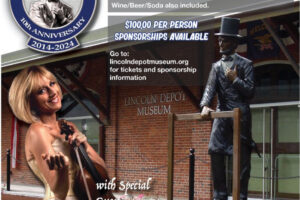
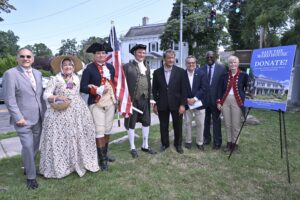
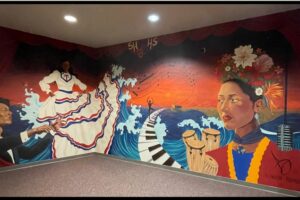

I sincerely hope these plans will be integrated with activity (and community outreach) from the $10M Downtown Revitalization Initiative. Is there an intefaith group in Ossining that might organize tours of the faith-based structures (existing, historic, in memory only) for Historic Downtown? What a treasure, adding to the soul of the Village!
Claudia, it is unclear what steps the school district is taking to recognize or preserve the historic aspects of the church. The superintendent was vague about whether state approvals are needed for the repurposing other than the removal of religious iconography. Here’s what a village official told me: “On the local level, the village takes the position that the school district has governmental immunity from local zoning and planning requirements.”